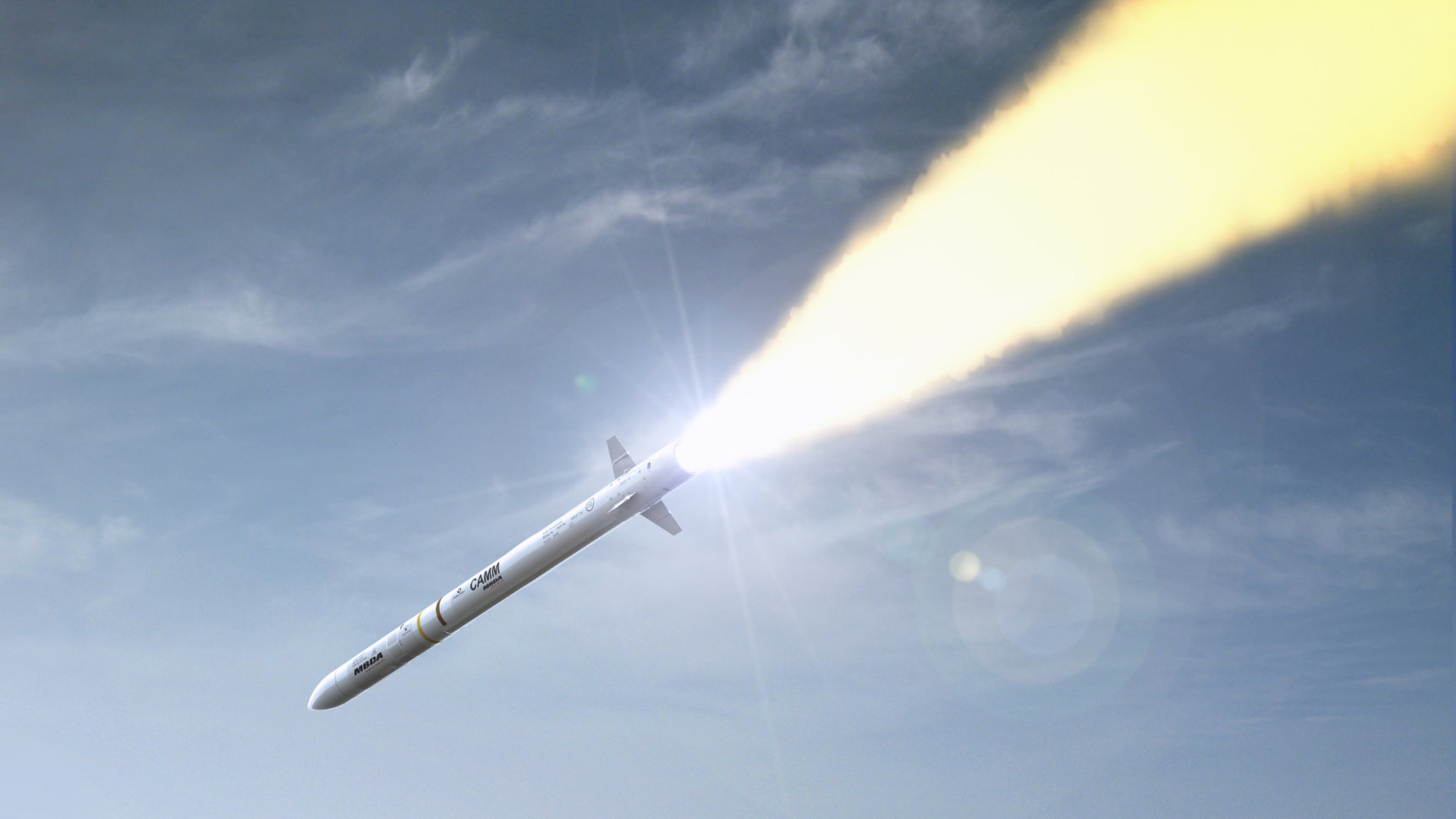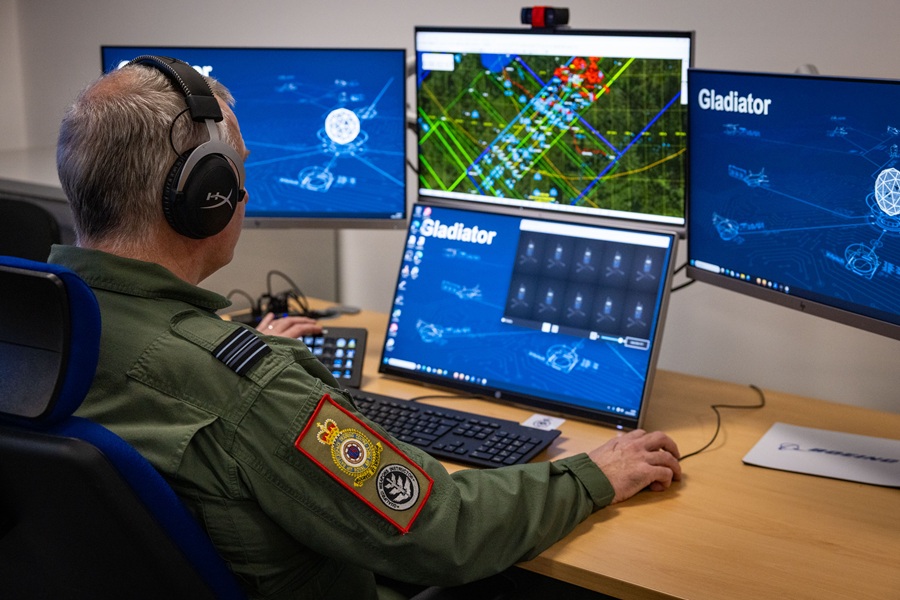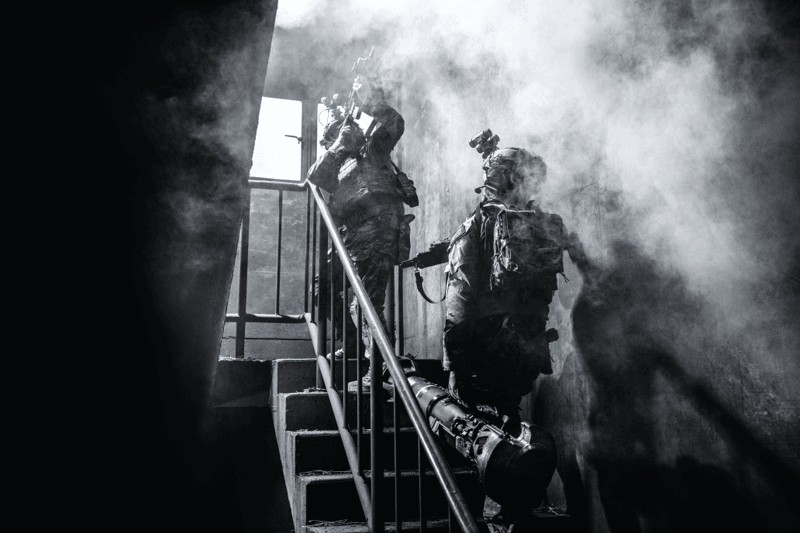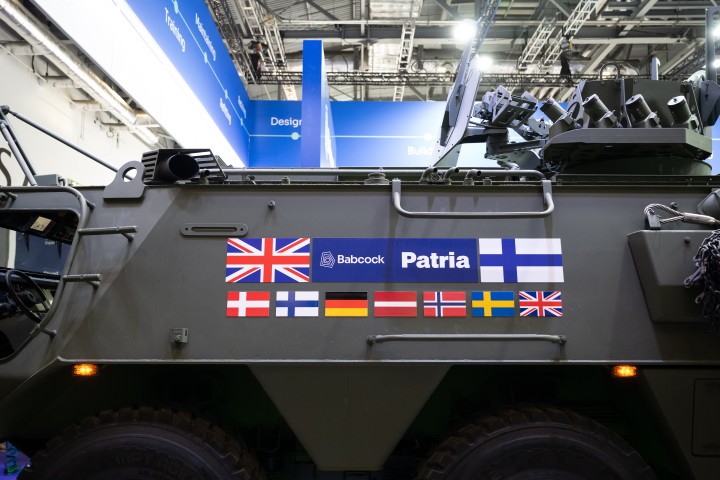MBDA's CAMM to increase firepower of Royal Navy's Type 45s

Image copyright MBDA
In addition to this, a 10-year contract with Eurosam will provide a refresh of the Aster 30 missiles system that are currently in use.
These contracts will support over 100 highly-skilled jobs in Bristol, Stevenage, Gosport and Bolton.
The work will see CAMM (Common Anti-air Modular Missile) paired with an upgraded Sea Viper command and control (C2) system for the first time. CAMM offers both world-leading close-in and local-area air defence, and will complement Aster 30, strengthening the anti-air defence capability of the Royal Navy.
Fitting CAMM onto the Type 45s will give the destroyers a 50% increase in the number of its air defence missiles. Installation will be via 24 additional launcher cells, and the Sea Viper C2 will get a technology upgrade, giving it a major increase in processing power.
The existing 48 Sylver cells on the Type 45 will now be solely for the longer-range Aster 30 missile, which is also subject to a recently announced mid-life refresh. This will see the missile remain in service throughout the life of the Type 45s.
CAMM has already been delivered to both the British Army and the Royal Navy, where it is the interceptor in both ground-based air defence (GBAD) and naval-based air defence (NBAD) systems, enabling these services to equip missiles from a shared stockpile.
In service on upgraded Royal Navy Type 23 frigates, CAMM will also be fitted to Type 26 and Type 31 in the future. The CAMM family has proven a rapid success with international customers, with Canada and Brazil among the new users ordering the missile this year.
Minister for Defence Procurement, Jeremy Quin said: "Enhancing our destroyer capabilities, this investment reaffirms our commitment to equip the Royal Navy with the most advanced and powerful defensive systems.
"This upgrade ensures the Type 45 remains hugely respected by naval fleets across the globe and secures highly-skilled jobs and investment."
Announced by the Prime Minister last November, Defence has received an increase in funding of over £24 billion across the next four years, focussing on the ability to adapt to meet future threats. Outlined further in the Defence Command Paper, this investment to upgrade the Type 45 destroyers will boost the lethality of the surface fleet. Currently, the Type 45 destroyers use a combination of short-range Aster 15 and long-range Aster 30 anti-air missiles to engage and destroy enemy threats. To facilitate the introduction of CAMM, a new 24-missile CAMM silo will be added in front of the current 48-missile Aster 30 silos, therefore increasing the overall missile capacity of the vessels by 50%. This will result in a total capacity of 72 anti-air missiles per destroyer.
Royal Navy Fleet Commander, Vice Admiral Jerry Kyd CBE said: "These programmes will provide an exceptional capability to the front line, ensuring the RN remains poised to defend the surface fleet, and most importantly the Carrier Strike Group, against complex air threats both now and into the future."
CAMM also provides a means to accurately and effectively engage small, fast inshore attack craft, hovering helicopters and low-speed targets alongside defeating their more traditional high-speed air targets.
The Aster 30 missile system refresh is a tri-national sustainment and enhancement contract between the UK, France and Italy which includes investment in a dedicated UK embodiment facility at Defence Munitions in Gosport, Hampshire.
DE&S CEO Sir Simon Bollom said: "The introduction of the UK produced CAMM missile in conjunction with the current Aster 30 missile will provide the Type 45 with a significant uplift in anti-air capability into the future as the Type 45 delivers the backbone of air defence to the Royal Navy’s Carrier Strike Group."
The Royal Navy’s Type 45 destroyers are among the most advanced in the fleet and carry out a range of activity, including defence from air attack, counter-piracy operations and providing humanitarian aid.
The first Type 45 destroyer is expected to have been overhauled by summer 2026.












